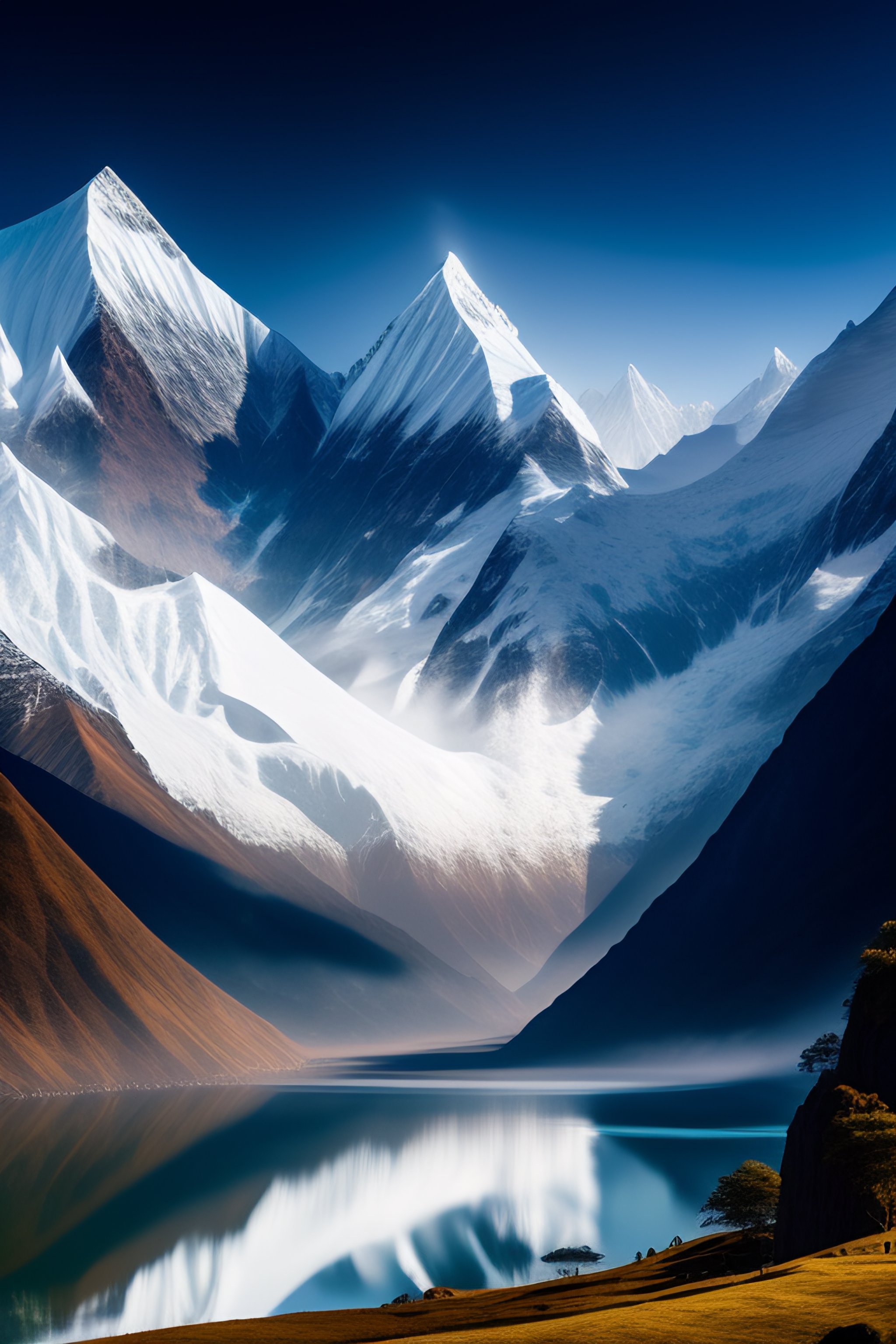The Glorious - Himalaya Majestic
Himalaya Majestic is a stunning mountain range located in Asia, spanning across five countries: India, Nepal, Bhutan, Tibet, and Pakistan. It is the highest mountain range in the world, with Mount Everest, the highest peak in the world, situated in the Himalayas. The Himalayas are famous for their breath-taking scenery, diverse flora and fauna, and unique cultural heritage.
Geography and Geology:
The Himalayas span over 2,400 km, from Nanga Parbat in Pakistan to Namche Barwa in Tibet. The mountain range is situated between the Tibetan Plateau in the north and the Indo-Gangetic Plain in the south. The Himalayas consist of three parallel mountain ranges, with the highest peaks in the Great Himalayan Range. The range is composed of sedimentary and metamorphic rocks, with the youngest rocks found near the highest peaks.
Climate and Weather:
The climate of the Himalayas varies depending on the altitude and location. The northern slopes are generally colder and receive more snowfall than the southern slopes. The high altitude areas of the Himalayas are covered with snow and ice throughout the year, and the region experiences extreme weather conditions during the winter months.
Flora and Fauna:
The Himalayas are home to a diverse range of flora and fauna, with a unique ecosystem that is adapted to the high-altitude environment. The lower slopes of the Himalayas are covered with dense forests, including oak, rhododendron, and pine trees. The higher altitudes are covered with alpine meadows and tundra, with sparse vegetation.
The Himalayan region is also home to a variety of wildlife, including the snow leopard, Himalayan black bear, musk deer, and red panda. The region is also known for its rich birdlife, with over 800 species of birds found in the Himalayan region.
Culture and Religion:
The Himalayas are home to a diverse range of cultures and religions, with the region being a melting pot of different traditions and beliefs. The region is home to several ethnic groups, including the Sherpas, Tibetans, and Bhutanese. The Himalayan region is also home to several ancient religious sites, including temples, monasteries, and shrines.
Mount Everest:
Mount Everest is the highest peak in the world, located in the Himalayas. The mountain is situated on the border between Nepal and Tibet and stands at an altitude of 8,848 meters. Mount Everest is named after Sir George Everest, a British surveyor who first recorded the height of the mountain in the 19th century.
Mount Everest has become a popular destination for mountaineers, with thousands of people attempting to climb the peak every year. The climb to the top of Mount Everest is considered to be one of the most challenging mountaineering expeditions in the world.
The Himalayas are not only known for their natural beauty, but also for their spiritual significance. The region is home to several ancient religious traditions, including Hinduism, Buddhism, and Jainism. The Himalayan region is considered to be a sacred place, with several important pilgrimage sites located in the region.
One of the most famous pilgrimage sites in the Himalayan region is the Kedarnath Temple, located in the state of Uttarakhand in India. The temple is dedicated to Lord Shiva and is one of the four Char Dham pilgrimage sites in India. The temple is located at an altitude of 3,583 meters and can only be reached by a trek through the Himalayan mountains.
Another famous pilgrimage site in the Himalayan region is the Pashupatinath Temple, located in Kathmandu, Nepal. The temple is dedicated to Lord Shiva and is one of the most important Hindu temples in the world. The temple is located on the banks of the Bagmati River and is known for its stunning architecture and intricate carvings.
Apart from their spiritual significance, the Himalayas are also known for their adventure activities. The region is a popular destination for trekking, mountaineering, and skiing. The Himalayas offer visitors a chance to challenge themselves physically and mentally, while also experiencing the beauty of the region.
One of the most popular trekking routes in the Himalayan region is the Annapurna Circuit, located in Nepal. The trek takes visitors through some of the most stunning landscapes in the world, including snow-capped peaks, alpine forests, and traditional villages.
The Himalayas are also an important source of water for the region. The region is home to several major rivers, including the Ganges, Brahmaputra, and Indus, which flow through the Himalayas. These rivers provide water for millions of people and support a rich agricultural economy in the region.
The Himalayas are also home to several national parks and wildlife reserves, which are important for the conservation of the region's biodiversity. These protected areas are home to several endangered species, including the Bengal tiger, Asiatic elephant, and one-horned rhinoceros.
One of the most famous national parks in the Himalayan region is the Sagarmatha National Park, located in Nepal. The park is home to Mount Everest and is known for its unique ecosystem, which includes high-altitude vegetation and rare wildlife.
The Himalayas are also an important center of traditional medicine and healing practices. The region is home to several traditional healing practices, including Ayurveda and Tibetan medicine. These practices use natural remedies and holistic approaches to healing, and are becoming increasingly popular in the Western world.
In recent years, the Himalayan region has also faced several environmental challenges, including deforestation, climate change, and pollution. These challenges have had a significant impact on the region's biodiversity and the livelihoods of local communities. Efforts are underway to address these challenges, including reforestation programs, sustainable tourism initiatives, and climate change adaptation strategies.
In conclusion, the Himalayas are a complex and fascinating region, with a rich history, diverse culture, and stunning natural beauty. The region offers visitors a unique experience, with opportunities for adventure, spiritual exploration, and cultural immersion. The Himalayas are an important part of our global heritage, and it is our responsibility to protect and preserve this magnificent mountain range for future generations.
Conclusion:
The Himalayas are a majestic mountain range that is home to a unique ecosystem, diverse culture, and rich history. The region is a popular destination for adventure seekers, nature lovers, and cultural enthusiasts. The region is a blend of natural beauty, spiritual significance, and adventure activities. The Himalayas are a must-visit destination for anyone who loves nature, adventure, or culture. The Himalayas offer visitors a once-in-a-lifetime experience, with stunning views, challenging trekking routes, and a chance to experience the rich cultural heritage of the region.




Comments
Post a Comment